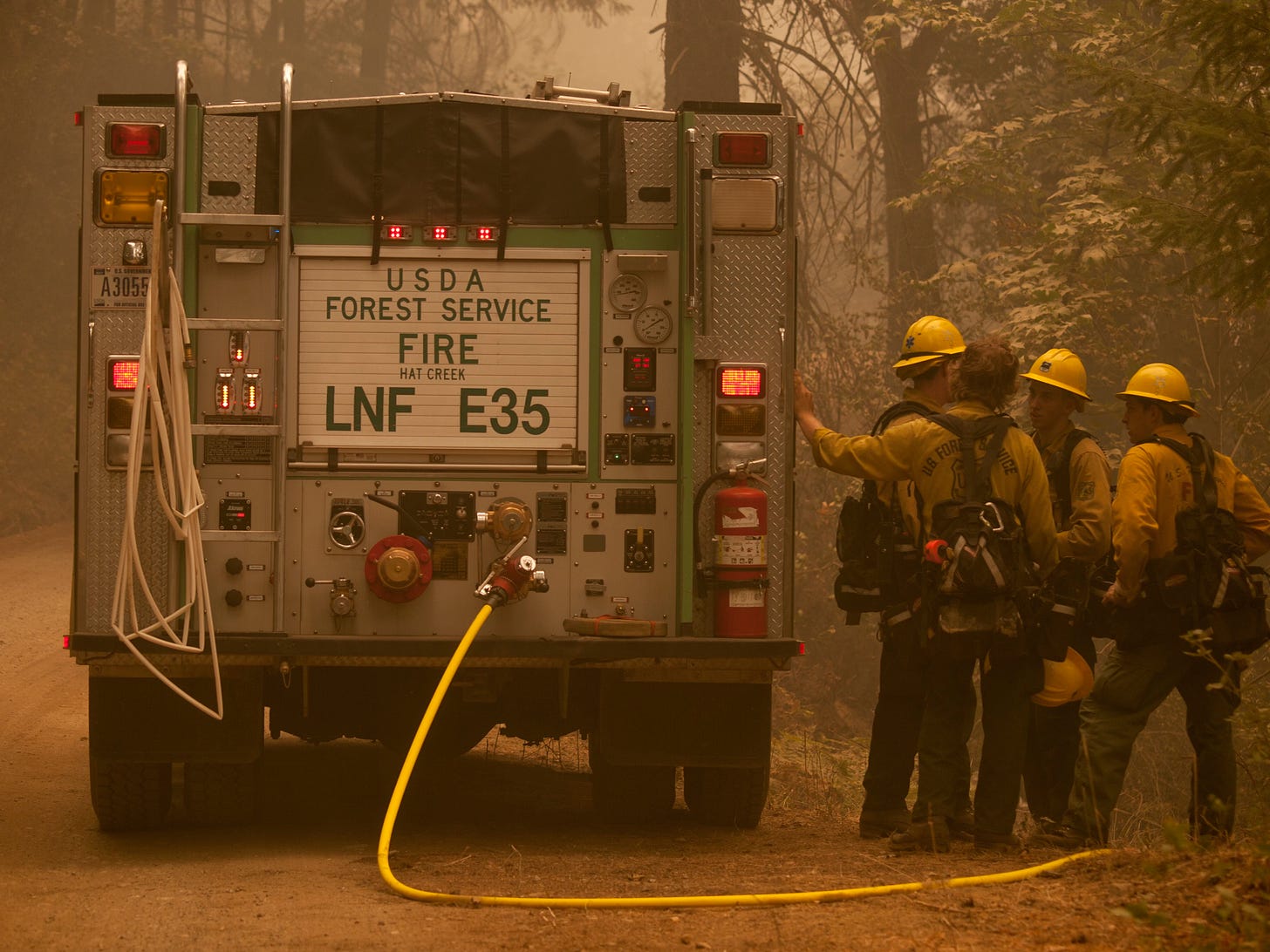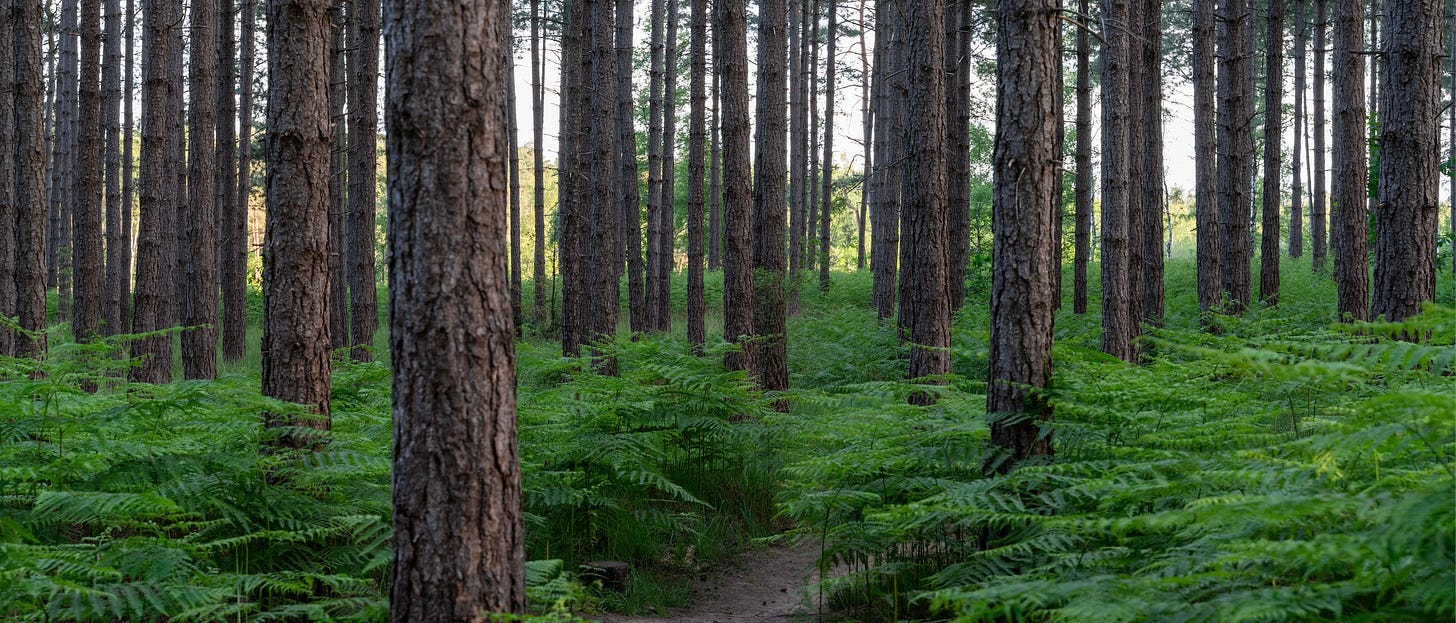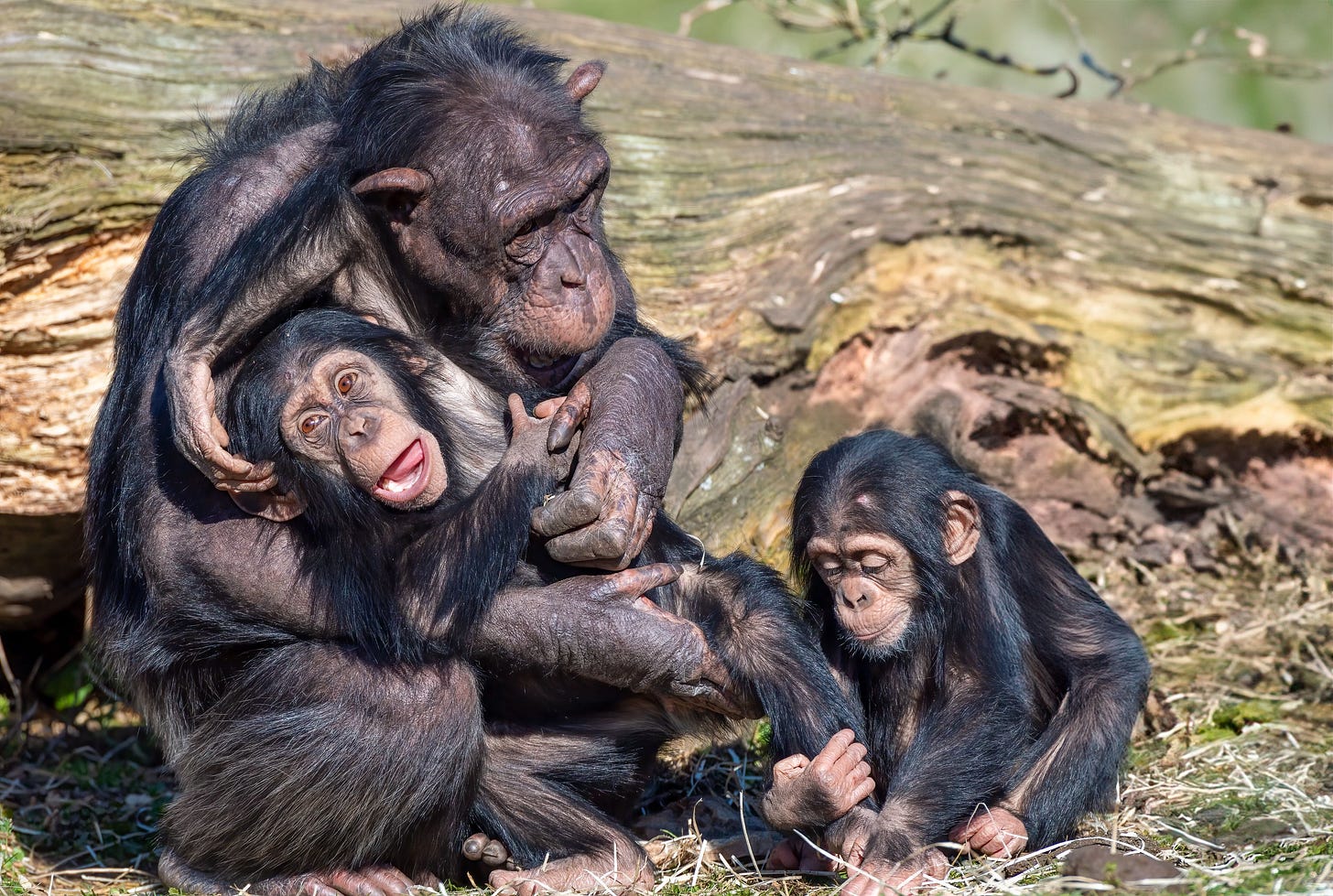Smart forests, dumb management?
Plus, meet the chimps who are amazing amateur pharmacists
By Dan Fletcher
Here is today’s audio edition!
When a wildfire tears through a forest or beetles ravage a mountainside, our first instinct is to "do something" to fix it. It's a forgivable response, maybe — we see damage and want to repair it.
But what if our well-intentioned interventions are actually making things worse? It's a bit like the person who "rescues" a fawn found alone in the woods, not realizing mother deer intentionally leave their young while foraging. The intervention, meant to help, disrupts a natural process that worked perfectly fine without human involvement.
Three forest ecologists are arguing that we’re doing exactly this in a recent article for The Revelator — that many "active management" practices are degrading natural systems rather than healing them. And to make matters worse, the Forest Service is simultaneously grappling with the termination of 3,400 probationary workers, many of whom play critical roles in wildfire response.
Let’s start with the science. These ecologists, who've spent decades studying forest ecosystems, conclude that commercial logging, mechanical thinning, and too-frequent controlled burns often do more harm than good. These approaches, while promoted as necessary for "resilience" and "forest health," can sometimes approach the ecological damage of outright deforestation.
Take post-wildfire logging. While it might seem logical to clean up "messy" burned forests, those dead trees serve crucial ecological functions, providing habitat for countless species and setting forests on a natural path of renewal the authors describe as "circular succession." When we interrupt this cycle through repeated logging and thinning, forests may never reach old growth stage again — with cascading effects on the countless wildlife species that depend on these complex ecosystems for survival.
Even more concerning, some approaches meant to reduce wildfire severity may actually increase it. Commercial logging of large, fire-resistant trees can create drier conditions, while opening up forest canopies allows higher wind speeds that drive faster-moving flames. These changes don't just threaten human communities — they fundamentally alter wildlife habitat that took centuries to develop.
Meanwhile, as these debates continue in academic circles, the practical reality on the ground is equally troubling. Bobbie Scopa, a retired firefighting veteran with 45 years of experience, warns that the Forest Service layoffs have immediately weakened wildfire response capabilities — right as environmental conditions worsen across the West.
"The firefighters cannot be effective on a fire without having the planning section supporting them with maps, the finance section paying the bills, and the logistics section getting the food and water out there," Scopa told Arizona’s ABC15.
What many don't realize is that the Forest Service operates with remarkable flexibility — many employees serve in multiple roles, working as biologists or recreation technicians while also being qualified wildland firefighters. "There are firefighters that have been fired," Scopa explained. "Maybe they work as a biologist, but they still go out on fires."

The timing couldn't be worse. Snowpack across the Southwest is at record lows, winter rains largely failed to materialize, and with dry vegetation and rising heat, the risk of fast-moving, large-scale fires has skyrocketed.
This leaves us in a troubling position — just as we need thoughtful, science-based approaches to forest management, we're losing both the scientific understanding and the workforce to implement any strategy effectively. The scientists aren't saying we should never intervene — there are cases where active management makes sense — but they're calling for a proper cost-benefit analysis, warning that "the treatments may be much worse than the problems they seek to resolve."
So what can you do? Start by managing your own fire risk. Scopa urges the public to do their part: clear brush, rake pine needles, and take ownership of defensible space around homes and cabins.
"What people can do is start getting involved and start recognizing not only their personal responsibility for their property, but also their responsibility to the greater good," she said.
As someone who lives in the mountains of Colorado, where forests are increasingly managed for wildfire prevention, I wonder if we're sometimes solving for the wrong problem at nature's expense — and now doing so with fewer resources than before.
Quick links! 🔗
Our closest relatives are also amateur pharmacists. Wild chimpanzees have been documented treating their own wounds and those of others with medicinal plants, according to new research published in Frontiers in Evolution and Ecology. Researchers observed chimps chewing plants into poultices for wounds, cleaning injuries by licking them, and even using leaves as toilet paper. Most surprisingly, chimps sometimes provided care to non-family members- — challenging the idea that altruistic caregiving is uniquely human. "Chimpanzees rely on the forest, not just for food, and not just for shelter, but really as a medicine cabinet," said lead researcher Elodie Freymann.
And another one for our growing list of innovative attempts to mitigate human-wildlife conflict: California just launched a digital tool showing approximate locations of GPS-collared wolves, giving ranchers advance warning when predators are nearby. The Wolf Location Automated Mapping System updates daily within a 4.5-square-mile area while hiding sensitive data like den sites. Conservation groups cautiously approve, with Amaroq Weiss noting, "Livestock-wolf conflicts are rare but both wolves and ranchers benefit if we make them rarer still."







Great read, thanks Dan! I never realized how interventions like thinning or post-fire logging could backfire so badly, but it makes total sense.